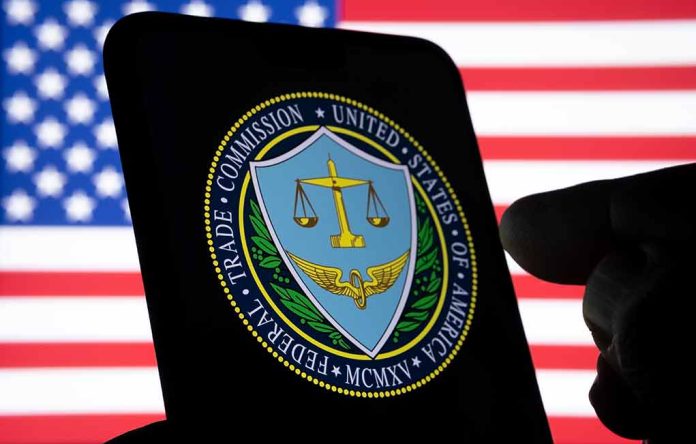
Trump’s zero-for-zero tariff strategy could revolutionize international trade, but will it work?
At a Glance
- Trump promised free, fair, and reciprocal trade during his presidency
- His zero-for-zero tariff strategy aims to eliminate trade barriers
- Section 301 tariffs on China cost American manufacturers and families $235 billion
- The strategy contrasts with Biden administration’s regulatory-focused approach
- Historical precedents show potential for success in tariff elimination
Trump’s Past Vision for Free and Fair Trade
When Donald Trump took office in 2017, he made a bold promise to the American people: free, fair, and reciprocal trade. This vision aimed to revitalize the U.S. economy and level the playing field in international commerce. However, the execution of this strategy took an unexpected turn, leading to a complex web of tariffs and trade disputes.
At that time, Trump’s current trade advisors, Peter Navarro and Robert Lighthizer, shifted focus towards implementing tariffs rather than opening markets. This approach, while intended to protect American interests, had unintended consequences. It effectively closed foreign markets to U.S. exports and discouraged foreign investment, creating a ripple effect across various sectors of the economy.
Will TRTA be a serious proposal? The Trump Reciprocal Trade Act turns over US tariff sovereignty to other countries. Strict reciprocity: we impose on them what they impose on us. Tariffs differ by product and country. MFN/WTO out the window. https://t.co/Q8ukJqWdfE
— Douglas Irwin (@D_A_Irwin) November 16, 2024
The Cost of Tariffs on American Families and Manufacturers
One of the most controversial aspects of Trump’s trade policy was the implementation of Section 301 tariffs on China. While aimed at addressing unfair trade practices, these tariffs came with a hefty price tag for American consumers and businesses. According to estimates, they cost American manufacturers and families a staggering $235 billion.
“I also try to protect myself by being flexible. I never get too attached to one deal or one approach.” – Donald Trump
This quote from Trump underscores his adaptable approach to trade negotiations. However, the reality on the ground proved more complex. Instead of changing its practices, China retaliated with its own tariffs on U.S. goods, escalating trade tensions and further complicating the economic landscape for American businesses.
The Zero-for-Zero Strategy: A New Approach
In response to these challenges, Trump proposed a novel approach: reciprocal zero-tariff trade deals. This strategy aims to eliminate foreign trade barriers entirely, creating a truly level playing field for international commerce. Trump adviser Larry Kudlow clarified that Trump’s tariff threats were primarily a negotiating tool, designed to bring trading partners to the table for more favorable agreements.
This zero-for-zero approach isn’t without historical precedent. In fact, it echoes strategies employed in earlier American trade policies. As William McKinley, a champion of American industry, once said, “Most desirable from every standpoint of national interest and patriotism is the effort to extend our foreign commerce.” This sentiment aligns closely with Trump’s vision for expanding U.S. trade opportunities.
The Potential Impact of Zero-for-Zero Tariffs
The benefits of a zero-tariff world could be substantial. Since the end of World War II, the average world tariff rate has plummeted from 22% to just 2.6% in 2017. This dramatic reduction has facilitated unprecedented growth in international trade. Trump’s zero-for-zero strategy aims to eliminate the remaining barriers, potentially unlocking even greater economic opportunities for American businesses and consumers.
“Most desirable from every standpoint of national interest and patriotism is the effort to extend our foreign commerce.” – William McKinley
This approach stands in stark contrast to the Biden administration’s strategy, which has not prioritized tariff cuts. Instead, Biden has focused on regulatory measures and multilateral agreements, which critics argue do little to address the fundamental issues of trade imbalances and market access.
A Potential Legacy for Trump
As we look to the future, Trump’s zero-for-zero tariff strategy could form a significant part of his economic legacy. By pursuing reciprocal zero-for-zero trade deals, Trump has the opportunity to extend U.S. commerce and combat high prices in a way that directly benefits American consumers and businesses. This approach, if successful, could reshape the landscape of international trade for generations to come.
While challenges remain, and the implementation of such a strategy would require careful negotiation and diplomacy, the potential benefits are clear. As America continues to navigate the complex waters of international trade, Trump’s zero-for-zero tariff strategy offers a bold vision for a more open, fair, and prosperous global economy.

















